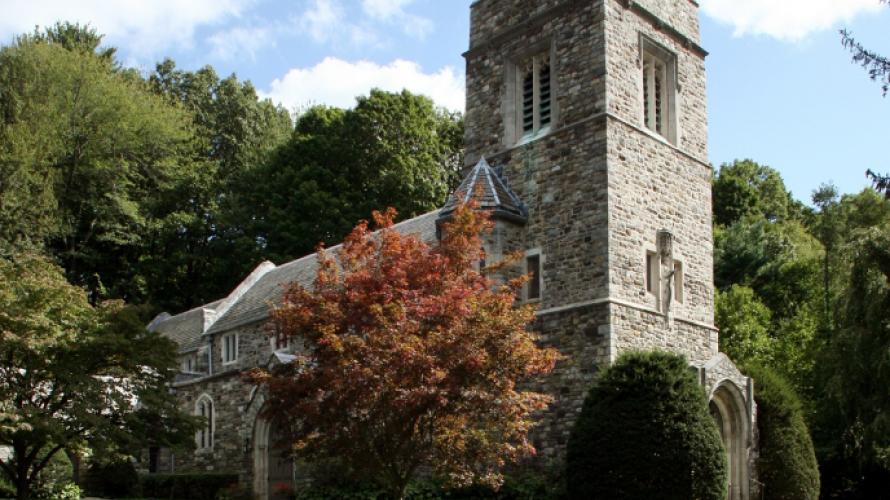
 Joseph Shelton is a freelance writer who graduated from Montana State University with a degree in English Literature. He lives in Bozeman, where he enjoys hiking, reading, and being a misunderstood artist-type.
Joseph Shelton is a freelance writer who graduated from Montana State University with a degree in English Literature. He lives in Bozeman, where he enjoys hiking, reading, and being a misunderstood artist-type.
Though I have not of late gone to church as often as I used to, and though I no longer live in Havre, I will never forget St. Mark's Episcopal Church.
It was made of grey stone bricks, and finished in the year that the Titanic met her disastrous end. It's cupola used to hold an enormous bell, but by the time I went there regularly that was replaced with a speaker that produced the approximate sound of bells. I do not think many people in town realized as much, because of how convincing the things which were not bells were, audible as they were for miles.
It had enormous wooden doors in the front, and a grand, old fashioned organ. The windows were stained glass, and represented the stations of the cross. The altar was big, and made of a deep brown wood and it was flanked on either side by chairs. The biggest one was for the Pastor, and the smallest for the altar boy who lit the candles, assisted with the Communion, and tried to stay awake through the sermon, since everyone could see him up there. This job eventually fell to me.
Of course, there weren't many people to notice me sleeping, since I remember about 12 regular members of the congregation, along with some 15 more who would show up on Christmas and other holidays, had moved but were still on the mailing list, or were simply too elderly to make it anymore. There were a great deal of elderly people at St. Mark's Episcopal Church, including a few that, at least numerically, could have been very young passengers of the Titanic themselves.
One of these august personalities was Smitty, a short, round, Mickey Rooney-ish old man who did not look his 80-some years, and another was Smitty's wife, whose name memory does allow me to recall. She died when I was younger, well before I proudly donned uncomfortable robes and sat behind the altar. I do, however, remember her often reading the Epistle, with a kind of lyrical tone that only the really elderly seem to bring to reading out loud. I remember she seemed perpetually young, bouncy, effervescent even. She suited Smitty perfectly, he being a little more sarcastic, as a foil.
After she died Smitty gave himself a little freer tongue, more likely to say something acerbic or vaguely offensive while still well within the bounds of acceptable crotchety-ness. Once, when I was old enough to start doing the Epistles (there being only 11 or 12 of us meant that we all took a turn, eventually) and stumbled over the word 'licentiousness' in one of Paul's more didactic letters, Smitty said "big words for a little squirt!" before clapping me on the back with an enormous, furry, weathered paw. "How'd you learn that one, you little pervert?"
Smitty never made me nervous (and I was a nervous kid), but the idea of spending a long car ride with him wasn't something I exactly savored. Smitty professed to knowing something about local geography and geology, you see, and my mom and dad thought it would be educational to have us go out and show them to us. The drive would take somewhere around 5 to 7 hours, a whole Sunday afternoon, and as much as I liked Smitty and the rest of St. Mark's, I would rather have watched television. At the time, anyway.
For as the drive went on, and Smitty stopped flirting with my Mom, he began to display an impressive knowledge of the surrounding hills. He told us when the badlands were made, and what kinds of stone were from what times, and what was happening in those times. He had on him a copy of "Roadside Geology of Montana" but he did not refer to the well-worn book. He had it all memorized.
He eventually told us that during the depression he had been employed by the Federal Works department, and had learned all of this then. He told a couple of decidedly spicy stories about what being a young man was like back then, and then he told us about how his dearly departed wife had reformed him. He had held a lot of job in 87 years, but the Federal Works seemed to have been his favorite. His eyes lit up to nearly the same wattage as they did when he remembered his wife.
Smitty died when I was about 12, and I missed him for a long time. All of us at St. Mark's did. Our congregation reduced by one, we felt like we lost ten. Smitty was the kind of personality whose absence is felt acutely.
When I moved away for college I sort of stopped going to church. The theological implications there trouble me less than does the fact that I do not meet the Smittys and their wives of the world as often.
And I imagine that for anyone who ever went to St. Mark's as a child, there is a romantic nostalgia for it into adulthood. The ivy that climbed it's rocks, the red cellar door to it's basement, the clear tone, even counterfeit, that issued from it's cupola, are not easily forgotten.
I haven't been there in a long time, but I hope it is well.
